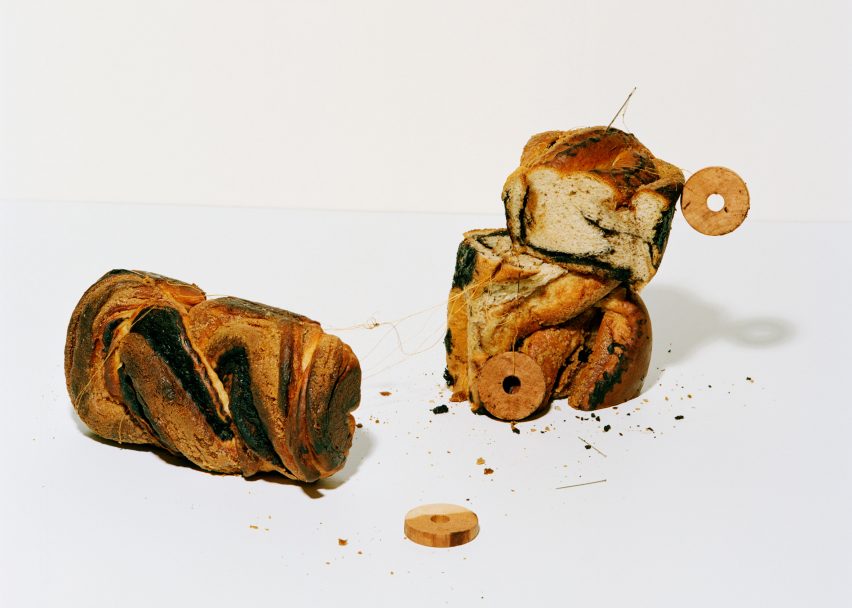
Le Corbuffet cookbook includes recipes for Rem Brûlée and Denise Scott Brownies
A Mies van der Roe Dip, an Odile Decquiri cocktail and Florence Knoll Rolls are among the recipes in a tongue-in-cheek cookbook by New York artist Esther Choi.
Choi's Le Corbuffet book, which takes its name from 20th-century architect Le Corbusier, includes 60 dishes and drinks influenced by well-known architects, designers and artists.
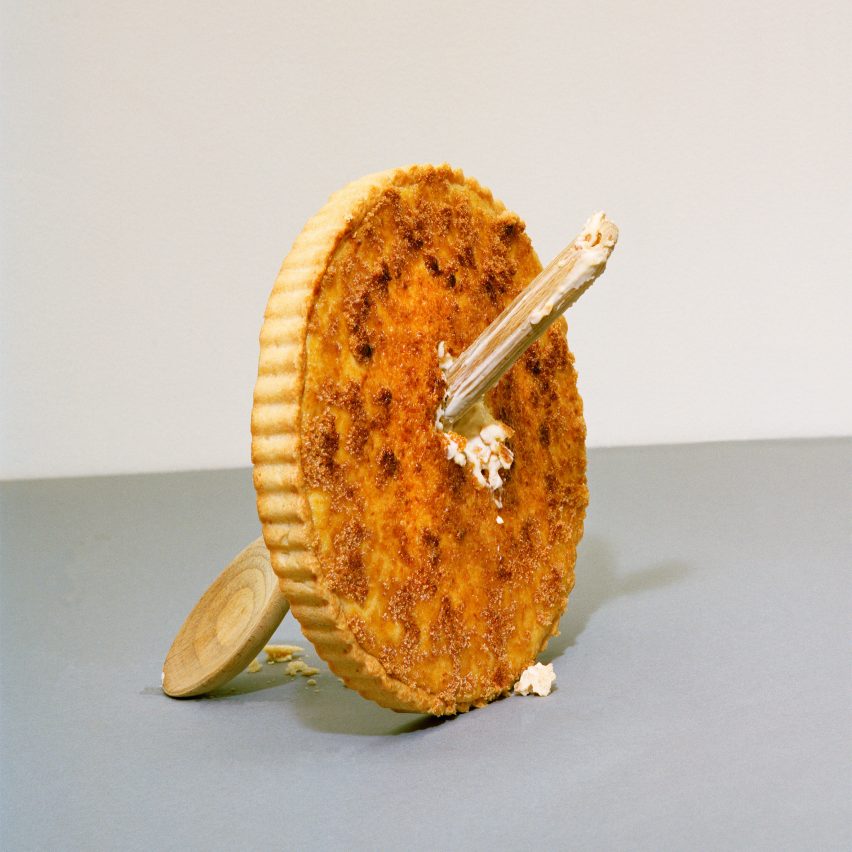
Alongside the recipes dedicated to architects Mies van der Rohe and Odile Decq, and designer Florence Knoll, are baked goods named after Denise Scott Brown, a crème brûlée dedicated to Rem Koolhaas, and Korean side dishes for Shigeru Ban.
Each recipe is accompanied by text that describes the featured artist or designer and an explanation about the inspiration behind the ingredients. Choi describes them as "edible structures".
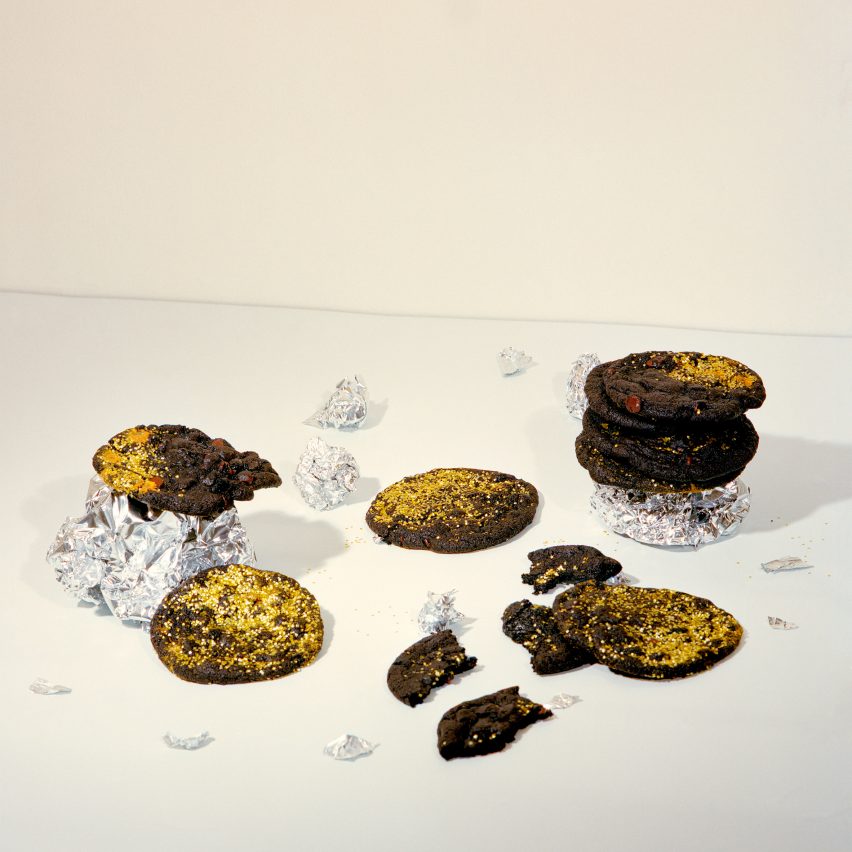
The László Macaroni-Nagy imagines Bauhaus professor László Moholy-Nagy, hungrily tucking into a macaroni cheese.
The Bannani Albers-Babka meanwhile is a sweet Jewish loaf with a twisted form intended to be reminiscent of the weaving found in Bauhaus designer and artist Anni Albers' textiles.
Other highlights include the Frida Kale-o Salad, Mario Bota Carota and Lina Bo Bacardi cocktails.
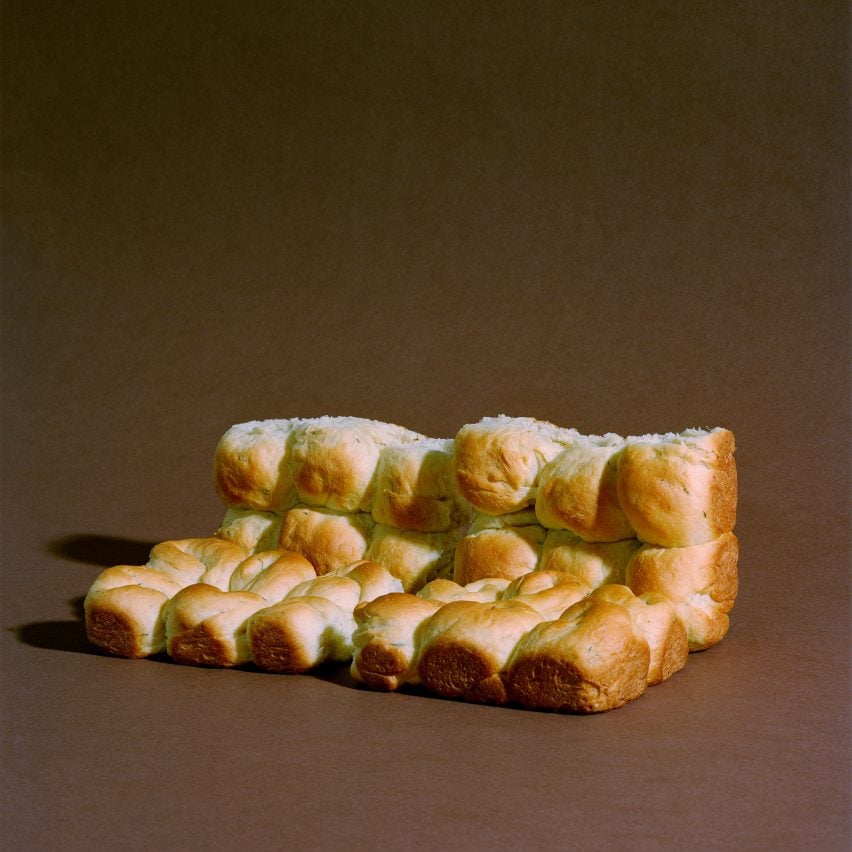
The book is designed by graphic design agency Studio Lin and published by Prestel.
It forms the cumulation of "absurd, pun-inspired dishes" that Choi began creating in 2015 – which she was prompted to start after finding an extravagant menu that Moholy-Nagy had created for Bauhaus founder Walter Gropius in 1937.
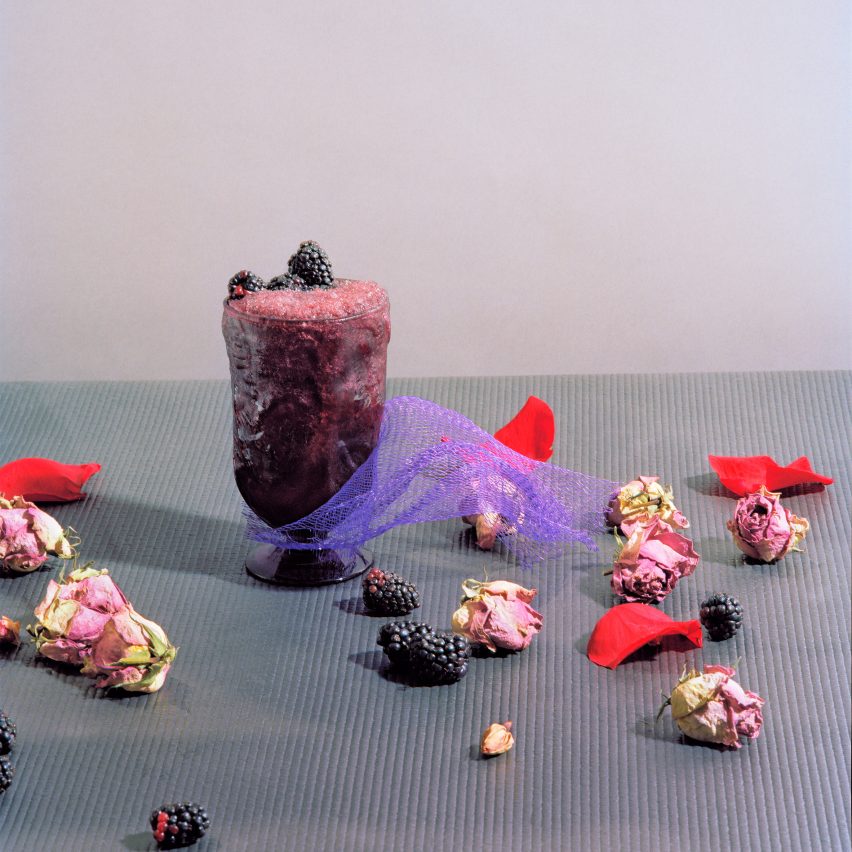
She said that she found that the elaborate dishes were incongruous with the rationing that was in place at the time.
"It prompted me to reconsider the often uncritical historical narratives ascribed to Gropius, complicated by his twofold status as a cultural icon during his lifetime, and a German immigrant in England and the United States during a time of intense xenophobia," she said.
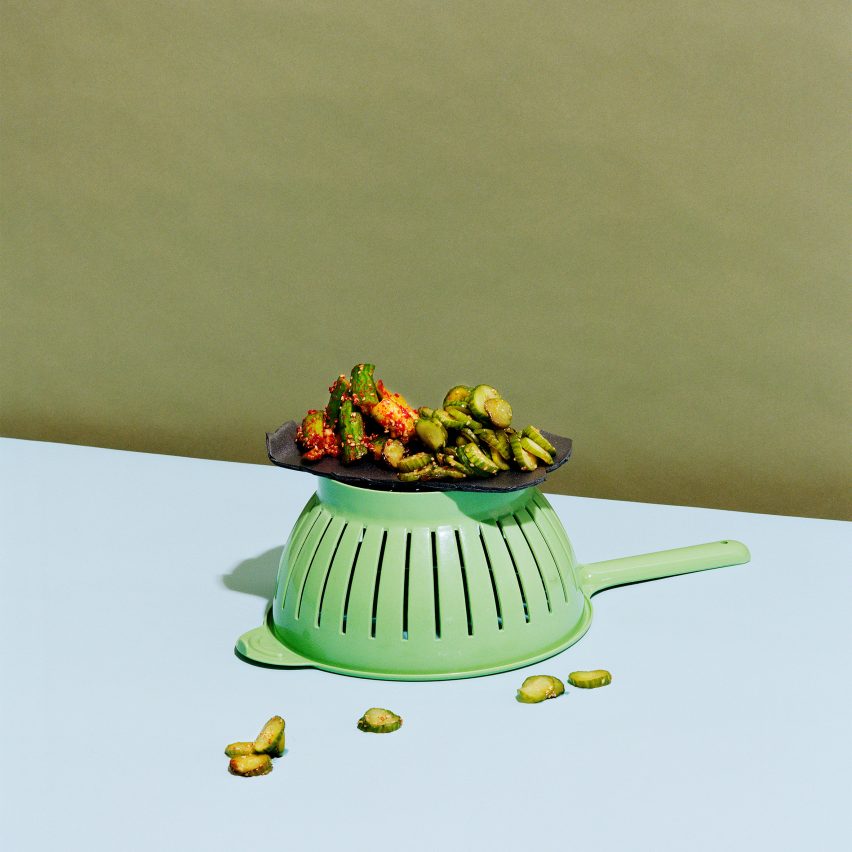
"Inspired by the menu for Gropius' dinner, and the questions that it raised about the elitism and valuation of cultural production, I decided to conduct a social experiment a year later," Choi continued.
She began hosting "Le Corbuffets" in her Brooklyn apartment in 2015 and continued the events up until 2017.
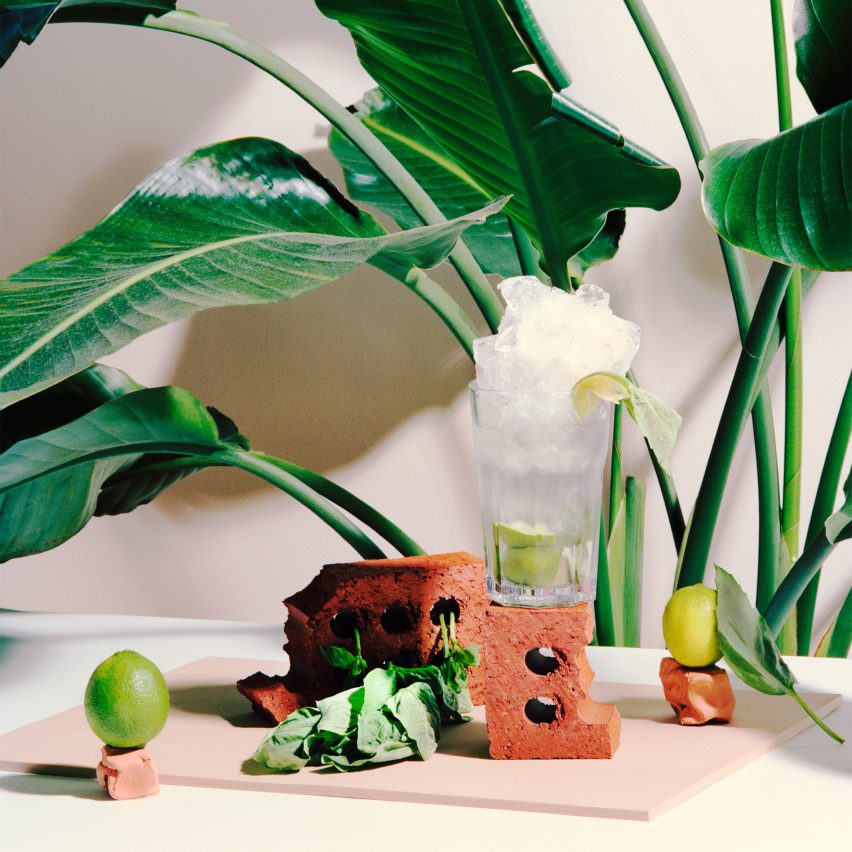
"Offering meals to an assortment of guests, these social gatherings revolved around the consumption of absurd, pun-inspired dishes that referred to canonical artists and designers," said Choi.
While Le Corbuffet is a pun, Choi also intends the book to function as an art piece that prompts a question about the way that art and design products are consumed.
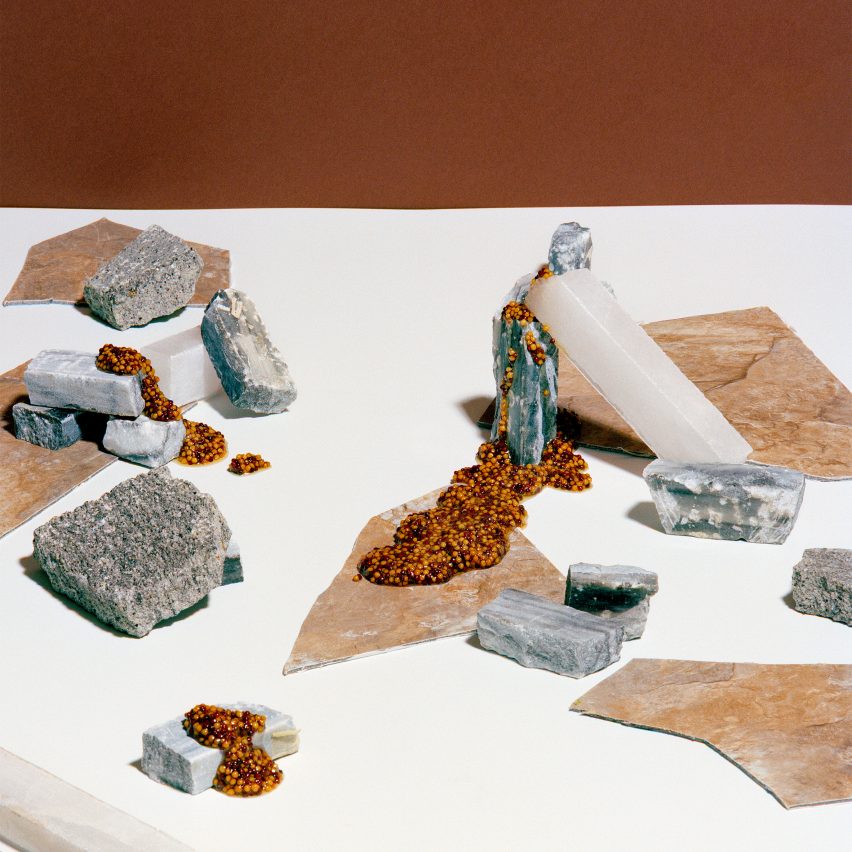
"As a commentary on the status of art, food, and design as commodities to be 'gobbled up' by the market, the project deliberately twisted idioms to probe the notion of 'aesthetic consumption' though taste and perception," said Choi.
"I wanted to explore what it means for canons to be consumed and reproduced, but how in revisiting great figures, works, and their narratives, we might reframe and engage with historical legacies to achieve new and different outcomes."
Other projects that have taken creative twists on food include a series of sculptural cakes that architect-turned-patisserie chef Dinara Kasko based on the three-dimensional works of artist José Margulis. Kasko also created geometric desserts.